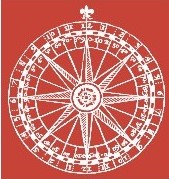Anagrams etc. The Interpretive Dilemmas of Lady Eleanor Douglas
The period 1620-1660 saw the emergence of several English women, of varying classes, who chose Biblical prophecy as an entry into public, political discourse. Many of these women, such as Hester Biddle and Margaret Fell Fox, stated their opinions…
Listée dans Article | publication par groupe Iter Community
Version 1.0 - publiée le 18 Aug 2025
Sous licence Creative Commons BY-NC 4.0
Description
The period 1620-1660 saw the emergence of several English women, of varying classes, who chose Biblical prophecy as an entry into public, political discourse. Many of these women, such as Hester Biddle and Margaret Fell Fox, stated their opinions with relative clarity. Lady Eleanor Douglas, however, made a career of powerfully impenetrable, allusion-filled writing. This paper proposes some methods of addressing Douglas’s texts, and works through some particularly difficult passages.
Citer ce travail
Les chercheurs doivent citer ce travail comme suit :
Tags
Notes
Original publication: Pickard, Richard. "Anagrams etc. The Interpretive Dilemmas of Lady Eleanor Douglas." Renaissance and Reformation 32 (3): 2010. 5-22. DOI: 10.33137/rr.v32i3.11573. This material has been re-published in an unmodified form on the Canadian HSS Commons with the permission of Iter Canada / Renaissance and Reformation. Copyright © the author(s). Their work is distributed by Renaissance and Reformation under a Creative Commons Attribution-NonCommercial 4.0 International License. For details, see https://creativecommons.org/licenses/.
Aperçu de la publication
Iter Community
This publication belongs to the Iter Community group.
When watching a publication, you will be notified when a new version is released.
